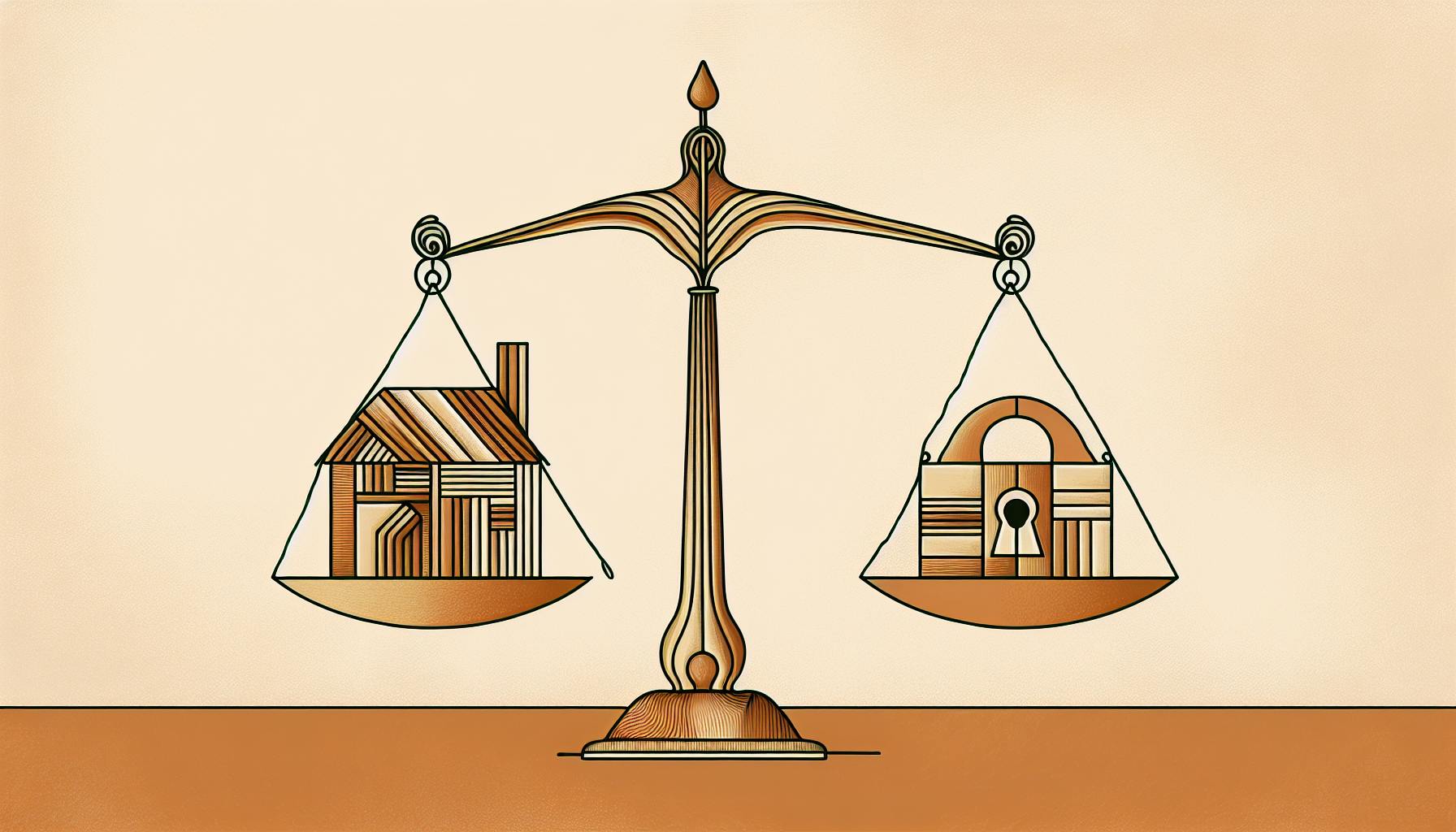Most can agree that highly publicized scandals involving beloved public figures often captivate and divide public opinion.
This article provides a factual recounting of the events surrounding the 1994 attack on figure skater Nancy Kerrigan, the subsequent investigation, and the lasting cultural impact.
We will examine the rise of Tonya Harding preceding the attack, the assault itself, the legal challenges Harding faced, as well as the broader implications on figure skating and perceptions of Harding and Kerrigan.
Introduction to the Ice Skating Scandal
The infamous attack on figure skater Nancy Kerrigan prior to the 1994 Winter Olympics captivated the nation and shone a spotlight on the fierce rivalry between Kerrigan and fellow skater Tonya Harding.
In January 1994, an assailant struck Kerrigan on the knee with a telescopic baton after a practice session at the U.S. Figure Skating Championships in Detroit. The attack severely injured Kerrigan and forced her withdrawal from the competition. As the investigation unfolded, suspicion mounted that the assault may have been orchestrated by members of the entourage of Harding, Kerrigan's chief rival.
The scandal rocked the figure skating world and fueled intense media coverage in the lead-up to the Lillehammer Olympics. It pitted Kerrigan, widely viewed as the wholesome "America's Sweetheart," against Harding, a gifted but controversial athlete from a working-class background. As the drama played out on the global stage, it highlighted themes of social class, the ethics of competition, and gender roles in sports.
Ultimately, the scandal would have severe consequences for Harding's career and legacy. But it indelibly marked one of the most notorious and gripping news stories of the 1990s centered around the dramatic world of competitive figure skating.
The Rise of Tonya Harding and the Triple Axel
Tonya Harding was a trailblazer in women's figure skating with her athletic ability to complete difficult jumps. In 1991, she landed the first triple axel by a woman in competition. Despite her talent, she faced criticism over her unconventional style and working-class background.
Nancy Kerrigan: America's Sweetheart on Ice
Nancy Kerrigan was known for her grace and artistry on the ice. Her wholesome image and All-American beauty made her extremely popular with audiences and a favorite heading into the 1994 Olympics.
The Assault at the 1994 United States Figure Skating Championships
On January 6, 1994, Nancy Kerrigan was clubbed on the knee by an attacker after a practice session in Detroit for the U.S Championships. The assault was planned by associates of Tonya Harding as an attempt to eliminate her top competition.
Harding vs. Kerrigan: The Rivalry That Captivated a Nation
In the weeks leading up to the Olympics, the storyline pitting Tonya Harding against Nancy Kerrigan - contrasting rivals from different social classes - fueled massive public interest. It created an off-ice spectacle that overshadowed the central athletic competition.
What happened to Tonya Harding's skate at the Olympics?
At the 1994 Lillehammer Winter Olympics, Tonya Harding was considered a top contender for the gold medal in women's figure skating. However, during her free skate program, the lace on one of Harding's skates broke shortly after she took the ice.
Harding was allowed to fix her broken skate lace and restart her program. However, the disruption clearly affected her performance. She fell multiple times during her program and placed 8th overall.
The broken lace incident capped off a difficult Olympics for Harding. In the prior months leading up to Lillehammer, she was embroiled in controversy after her ex-husband and bodyguard orchestrated an attack on her rival Nancy Kerrigan.
While Harding maintained she wasn't involved in planning the attack, the negative publicity and intense media scrutiny took a toll. The broken skate lace at the Olympics compounded her challenges.
Ultimately, the Olympics marked the end of Harding's competitive skating career. But the dramatic incidents surrounding her during this time brought her increased notoriety. Her story was later chronicled in the popular film "I, Tonya."
How did this influence the opinions of both skaters when Kerrigan was attacked?
The attack on Nancy Kerrigan just weeks before the 1994 Winter Olympics had a significant influence on public opinion about both Kerrigan and Tonya Harding.
Kerrigan was seen as the victim in the scenario. She did not ask for the attack and the public sympathized with her. Many people admired her determination to still compete at the Olympics despite her injury from the attack. Kerrigan's graceful skating style and all-American sweetheart image also contributed to positive public opinions about her.
In contrast, Harding faced very negative public perception after the attack. Even though she denied direct involvement, most people believed she likely had knowledge of the planned assault. Her association with the attackers and failure to come forward with information implicated her in the public eye. Harding's athletic and aggressive skating style also did not fit the feminine ideal that Kerrigan embodied. Overall, the attack solidified Harding's reputation as the "bad girl" of figure skating in the eyes of the public.
So while the attack boosted positive opinions about Kerrigan's resilience and class, it had the opposite effect on Harding - further portraying her as an antagonist in the drama. Ultimately, the attack derailed both skaters' careers and prevented them from ever fully achieving their potential on the ice.
Why did Nancy Kerrigan cry?
Nancy Kerrigan was attacked on January 6, 1994 at the U.S. Figure Skating Championships in Detroit by Shane Stant, an associate of Tonya Harding's ex-husband Jeff Gillooly. Stant struck Kerrigan on her right knee with a telescopic baton as she was leaving the ice after a practice session.
The attack severely injured Kerrigan, threatening her ability to compete in the upcoming 1994 Winter Olympics. Video footage shows Kerrigan crying out in pain and repeatedly asking "Why?" as she grasped her injured knee. This shocking attack made headlines around the world.
The motive behind the attack was to prevent Kerrigan from competing against Tonya Harding at the Olympics. Harding and Kerrigan were considered the top contenders for the 1994 ladies' figure skating gold medal. By taking out her top rival, Harding hoped to secure her own spot on the Olympic team.
While Kerrigan was not able to compete at Nationals due to her injury, she later recovered and went on to win the silver medal at the 1994 Olympics, where Harding placed 8th. The attack and its aftermath marked one of the most notorious scandals in figure skating history.
sbb-itb-585a0bc
sbb-itb-585a0bc
sbb-itb-585a0bc
sbb-itb-585a0bc
The Attack on Nancy Kerrigan and the Investigation
On January 6, 1994, Nancy Kerrigan was attacked at the ice rink after a practice session for the U.S. Figure Skating Championships in Detroit. She was struck on the leg with a telescopic baton by an unknown assailant. The attack severely injured Kerrigan, threatening her ability to compete at the Championships and Olympic Trials.
Nancy Kerrigan Attack - Raw Footage - January 6, 1994
The raw footage shows Kerrigan walking through a hallway at Cobo Arena when a man suddenly rushes toward her. She is heard screaming as the man strikes her knee with an object and flees. Kerrigan falls to the ground, sobbing and asking "Why, why, why?" as her coach and others rush to help. The disturbing video sent shockwaves through the figure skating community.
The Role of the Telescopic Baton
The weapon used to injure Kerrigan was identified as a collapsible police baton measuring over one foot long. When extended, the metal baton can concentrate significant force on a small point of impact, capable of shattering bone. The use of this weapon demonstrated intent to grievously harm Kerrigan to prevent her competing.
Identifying the Bodyguard and Getaway Driver
An FBI investigation uncovered the assailant as Shane Stant, hired by Jeff Gillooly - the ex-husband of rival skater Tonya Harding. Stant and getaway driver Derrick Smith were traced back to Harding's inner circle. The emerging links to Harding as the mastermind behind the attack prompted intense media scrutiny.
The Grand Jury and the Search for the Truth
A grand jury was convened to determine if there was enough evidence for criminal indictments. Over many weeks, testimony alleging Harding's prior knowledge of the plot emerged. Transcripts reveal discussions about potential alibis and attempts to cover up her involvement after the attack. While the truth remained elusive, the investigation irreversibly tarnished Harding's reputation.
Tonya Harding's Legal Challenges
Tonya Harding faced serious legal repercussions for her involvement in the attack on Nancy Kerrigan. She was charged with racketeering, conspiracy, and hindering prosecution.
Harding Stripped of Title; Banned for Life
The United States Figure Skating Association (USFSA) conducted its own investigation into Harding's involvement. Based on a preponderance of evidence, the USFSA determined that Harding had prior knowledge of the attack. As a result, the USFSA stripped Harding of her 1994 National Championship title and issued a lifetime ban. She was deemed a persona non grata in the sport of figure skating.
Harding Admits Guilt in Plea Bargain, Avoids Prison
Facing criminal charges, Harding reached a plea deal. She pleaded guilty to hindering prosecution, a Class C felony. The plea bargain allowed her to avoid prison time. Instead, Harding was sentenced to 3 years probation, 500 hours community service, and a $160,000 fine. She was also required to donate $50,000 to the Special Olympics and undergo psychiatric treatment.
Harding Found Guilty of Hindering Investigation
In pleading guilty, Harding admitted she learned about the attack after the fact and failed to immediately report it to authorities. This admission, along with other evidence, led Harding to be found guilty of the charge of hindering prosecution.
Harding's Disciplinary Charges and the Amateur Sports Act of 1978
The USFSA brought disciplinary charges against Harding under the Amateur Sports Act of 1978. This Act allows sports governing bodies to suspend athletes for violating rules of ethical conduct. Harding's ban for life was enacted under the provisions of this Act.
The Fallout: Sentencing and Beyond
The aftermath of the attack on Nancy Kerrigan brought intense legal consequences for those involved.
Gillooly Sentenced to 2 Years in Jail
Jeff Gillooly, Harding's ex-husband, pleaded guilty to racketeering for his role in planning the assault. He was sentenced to 2 years in prison and fined $100,000.
Kerrigan Attacker & Accomplice Sent to Jail
Shane Stant, the man who actually hit Kerrigan, and Derrick Smith, who drove the getaway car, were sentenced to 18 months and 15 months in prison, respectively.
Harding's Life After the Trial
In the years following the scandal, Harding has largely withdrawn from the public eye. She was banned for life from the U.S. Figure Skating Association. Harding maintains that she did not know about the attack beforehand.
Community Service and Philanthropy: Special Olympics Oregon
As part of her plea deal, Harding was ordered to complete 500 hours of community service with Special Olympics Oregon. She has continued supporting Special Olympics over the years.
Cultural Impact and Media Portrayal
The attack on Nancy Kerrigan and the subsequent fallout had a significant cultural impact and received extensive media coverage at the time. While revisiting painful events, we must thoughtfully consider the ethics and facts without judgment.
'I, Tonya': The Story Retold
The 2017 film offered one interpretation of Harding's role in the scandal. As with any dramatic portrayal based on real events, it inevitably took creative license and should not be viewed as factual record.
The Scandal's Influence on Figure Skating's Code of Ethics
The incident highlighted opportunities to clarify ethical guidelines around sportsmanship and conduct. Any resulting policy changes aimed to uphold the integrity of athletic competition.
Persona Non Grata: Harding's Exclusion from the Figure Skating Community
In the aftermath, figure skating authorities implemented a ban. While intended to protect the sport, such actions impact lives. With time and space for growth, we can have compassion.
Public Perception: From News Conferences to National Championships
Initial condemnation evolved to broader discussion. Judgment passed in the heat of shock later gave way to nuanced consideration in calmer hindsight. There are complex humans behind the headlines.
Conclusion: Reflecting on the Harding-Kerrigan Scandal
The attack on Nancy Kerrigan and the subsequent fallout marked one of the most shocking scandals in figure skating history. While Tonya Harding maintained her innocence, the preponderance of evidence and her plea bargain painted a damning picture of complicity. Harding was banned for life by the U.S. Figure Skating Association.
Ultimately, the differing standards between criminal and civil law impacted the outcome. The higher burden of proof in criminal cases allowed Harding to avoid jail time despite strong evidence against her. This contrast continues to fuel debate around the case.
The story's elements of rivalry, betrayal, and brutality have cemented its place in popular culture. Harding's role as both perpetrator and victim captures the imagination. Nancy Kerrigan's grace under pressure turned her into an American sweetheart. Their contrasting trajectories keep audiences fascinated by this real-life drama, even decades later.
The scandal serves as a cautionary tale, underscoring the ethical lines that competitive athletes cross at their own peril. While Harding's banished status made her a notorious figure, Nancy Kerrigan moved forward with poise and success. Their opposing legacies force us to examine our own ethical codes in sports and life.


